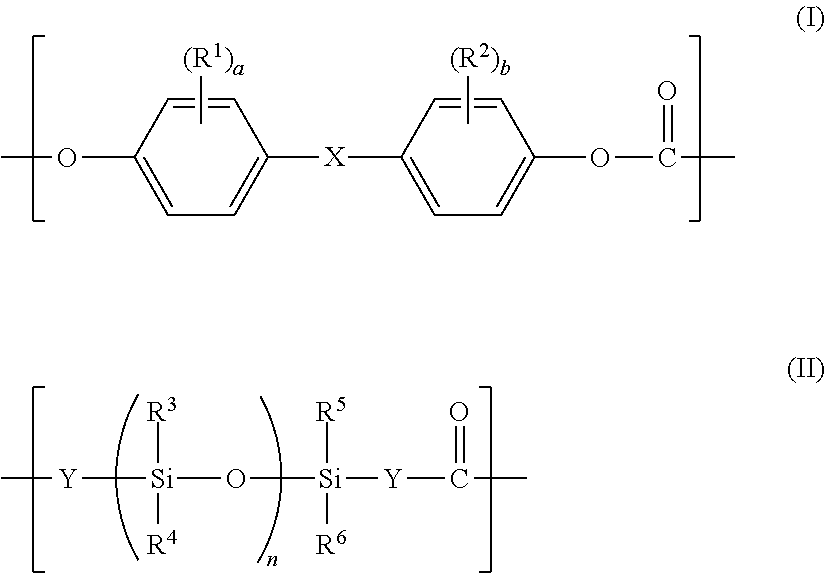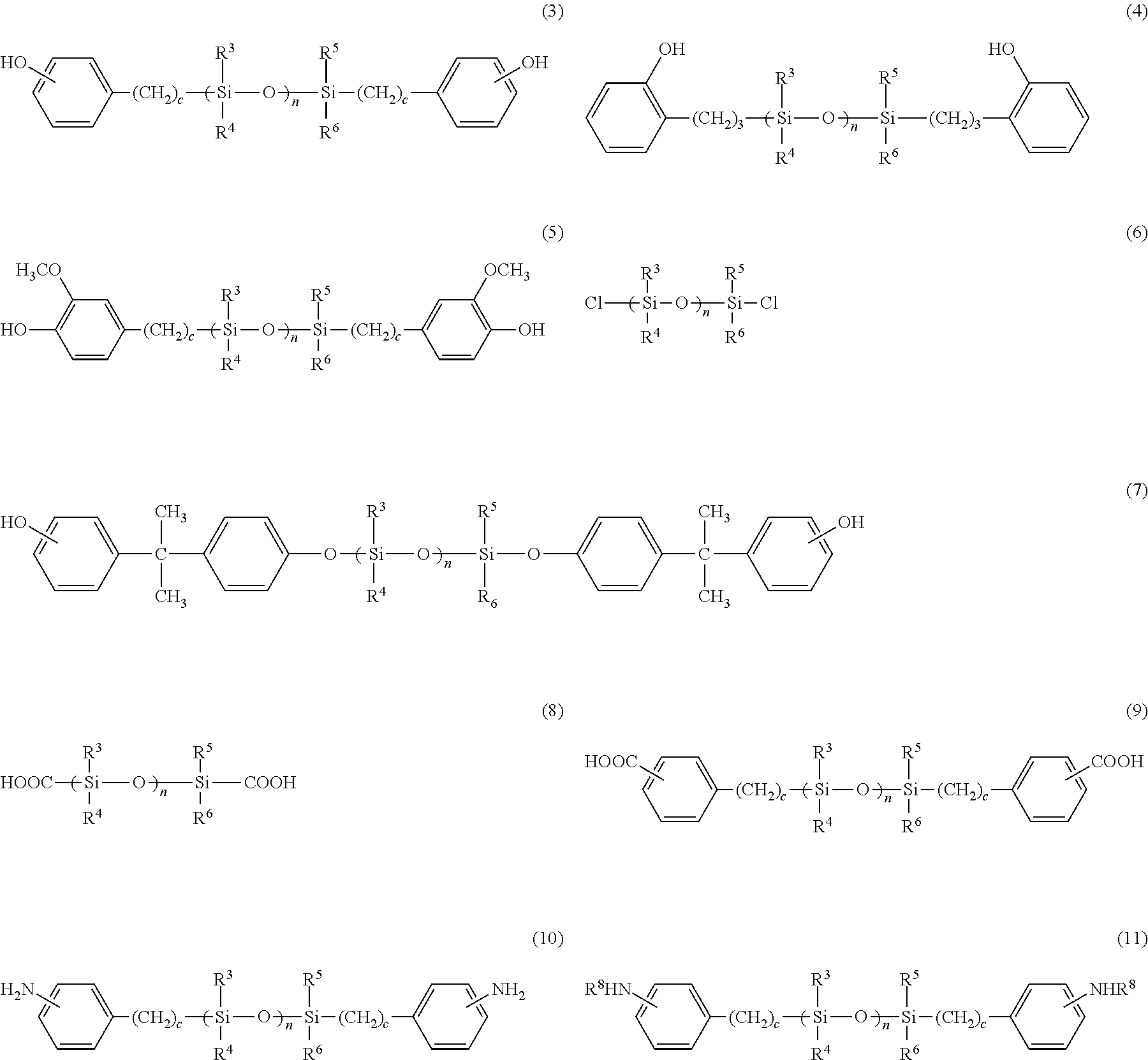Polycarbonate resin composition, molded article and structure member for solar photovoltaic power generation
a technology of polycarbonate resin and solar photovoltaic power generation, which is applied in the direction of tyre parts, vehicle components, woodworking apparatus, etc., can solve the problems of poor low-temperature impact characteristic of resin composition of patent literature 1, poor tracking resistance of structure members, and inconvenient use, etc., to achieve excellent low-temperature impact characteristic, excellent flame retardancy, and excellent tracking resistance
- Summary
- Abstract
- Description
- Claims
- Application Information
AI Technical Summary
Benefits of technology
Problems solved by technology
Method used
Image
Examples
production example 1
(1) Synthesis of Polycarbonate Oligomer
[0132]Added to a 5.6-mass % aqueous sodium hydroxide were 2,000 ppm by mass of sodium dithionite with respect to bisphenol A to be dissolved later. Bisphenol A was dissolved in the solution so that the concentration of bisphenol A became 13.5 mass %. Thus, a solution of bisphenol A in aqueous sodium hydroxide was prepared.
[0133]The solution of bisphenol A in aqueous sodium hydroxide, methylene chloride, and phosgene were continuously passed through a tubular reactor having an inner diameter of 6 mm and a tube length of 30 m at flow rates of 40 L / hr, 15 L / hr, and 4.0 kg / hr, respectively. The tubular reactor had a jacket portion and the temperature of a reaction liquid was kept at 40° C. or less by passing cooling water through the jacket.
[0134]The reaction liquid that had exited the tubular reactor was continuously introduced into a baffled vessel-type reactor having an internal volume of 40 L provided with a sweptback blade, and then 2.8 L / hr o...
production examples 2 to 5
[0140]PC-PDMS copolymers A-1-2 to 5 were synthesized by changing the kind of the polydimethylsiloxane, the usage of the polydimethylsiloxane, and the usage of p-t-butylphenol as shown in Table 1. Table 1 shows the physical property values of the copolymers.
[0141]
TABLE 1ProductionProductionProductionProductionProductionUnitExample 1Example 2Example 3Example 4Example 5PC-PDMS copolymerA-1-1A-1-2A-1-3A-1-4A-1-5Average repetition number n of—9040150300700constituent units in general formula (II)Usage of PDMSg411411411411411Usage of PTBPg132132132132132Amount of PDMS residuemass %66666Viscosity numberml / g49.549.549.549.549.5Viscosity-average molecular weight Mv—18,50018,50018,50018,50018,500
PUM
| Property | Measurement | Unit |
|---|---|---|
| mass % | aaaaa | aaaaa |
| mass % | aaaaa | aaaaa |
| mass % | aaaaa | aaaaa |
Abstract
Description
Claims
Application Information
 Login to View More
Login to View More - R&D
- Intellectual Property
- Life Sciences
- Materials
- Tech Scout
- Unparalleled Data Quality
- Higher Quality Content
- 60% Fewer Hallucinations
Browse by: Latest US Patents, China's latest patents, Technical Efficacy Thesaurus, Application Domain, Technology Topic, Popular Technical Reports.
© 2025 PatSnap. All rights reserved.Legal|Privacy policy|Modern Slavery Act Transparency Statement|Sitemap|About US| Contact US: help@patsnap.com



